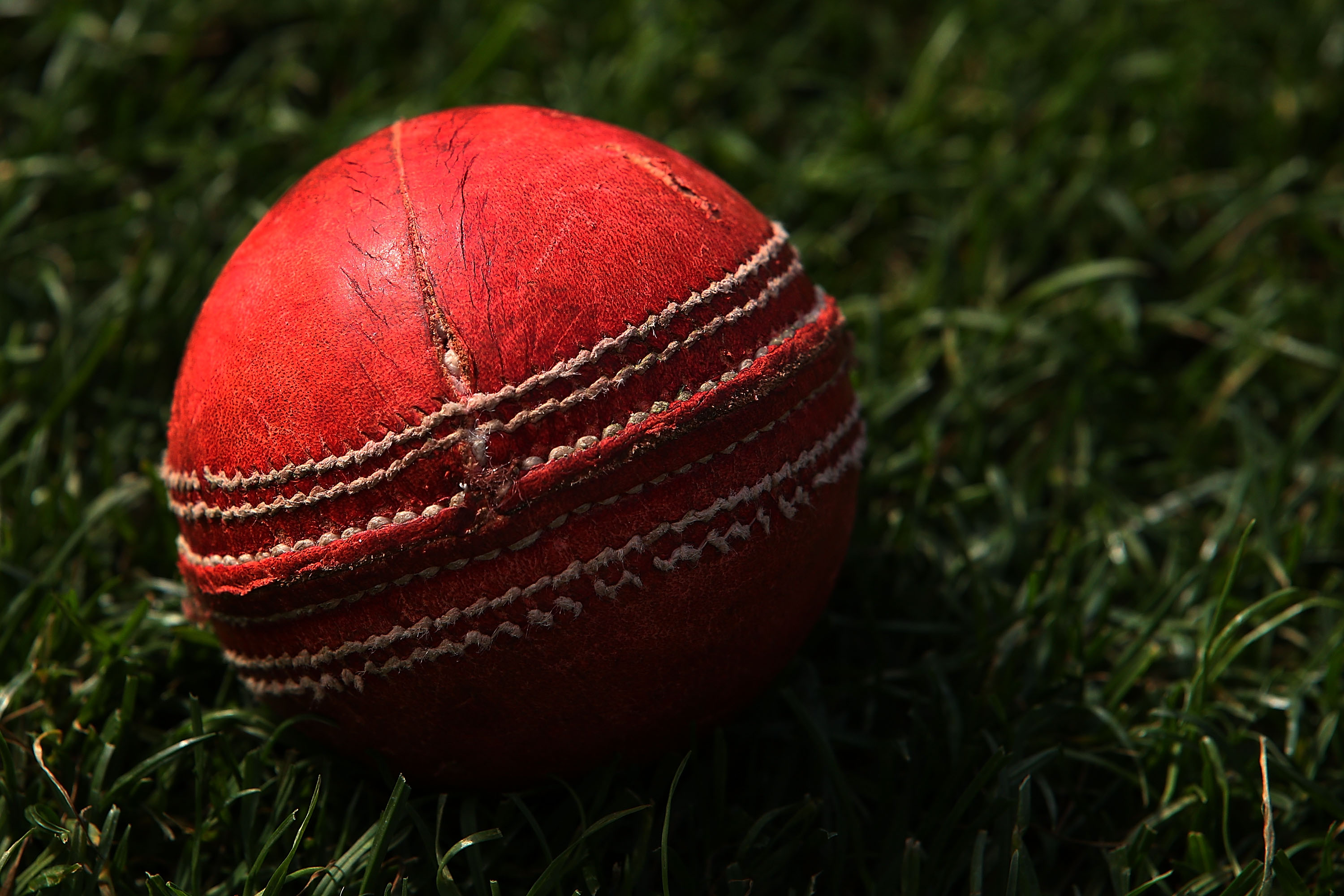Five ball-tampering incidents that caused a stir in world cricket
With the ball-tampering controversy involving South Africa's Faf du Plessis and allegations on Indian captain Virat Kohli grabbing the headlines everywhere, we take a look at ball-tampering incidents that rocked the world of cricket.

The ball is the holiest thing in any sport. A goalkeeper cannot hold on to a football for much time, otherwise, he would be
Strike it without mercy, but do not try to play with its shape, threading,.....erm shine, do not use mints, toffees, gums, sun tan and what not. With South Africa captain Faf du Plessis' innocence claims grabbing the headlines across newspapers and cricketing forums, let us be reminded that there have been incidents in the past involving ball tampering which completely took away the focus from the sport. But all these incidents have only managed to show that the International Cricket Council (ICC) has no proper system to decide what is wrong or right for players when it comes to the cricket ball.
Shoaib Akhtar, 2003 vs New Zealand
The relationship of the pioneers of reverse swing with ball tampering never ceases to die down. Shoaib Akhtar, who is known for his temper tantrums with opposition players and also his teammates, was this time found altering the shape of the ball in the May 2003 in a match against New Zealand. After it appeared that the Rawalpindi Express was trying to rub the seam of the ball with his thumb, Gamini Silva, third umpire of the match, reported the incident to match referee Gundappa Viswanath.

 © Getty
© GettyWhile it was believed by many that Akhtar would be banned for at least eight ODIs, the officials let the fast bowler get away with a fine of 50% match fees and a ban of 2 One-day internationals. But the damage was already done. While Akhtar was found to be tampering with the ball in the 29th over according to the TV footage and even the umpires taking a note of it, the ball was changed in the 43rd over. By this time, New Zealand had already lost six wickets and would eventually go on to lose the match by 22 runs.

 © Getty
© GettyAdding to this, Akhtar was already charged with a level 2 offence by that time after throwing a bottle into the crowd a few months ago in a match against Zimbabwe, but
Marcus Trescothick, The Ashes, 2005
The autobiography of the former England opener seems to have become the new rule book for the authorities following Faf du Plessis' incident against Australia. After ending up on the losing side for 19 long years in The Ashes, the Poms were finally able to beat Australia by a margin of 2-1 in 2005 - one of the finest Ashes to be ever played. The Aussies crumbled under the devastating reverse swing generated by England's Steve Harmison, Andrew Flintoff and Simon Jones in that series.

 © Getty
© GettyThree years after recapturing the Urn, Trescothick wrote in his autobiography “Coming Back To Me”, “I was firmly established as the man in charge of looking after the ball when we were fielding. It was my job to keep the shine on the new ball for as long as possible with a bit of spit and a lot of polish. And through trial and error, I finally settled on the best type of spit for the task at hand. It had been common knowledge in county cricket for some time that certain sweets produced saliva which when applied to the ball for cleaning purposes enabled it to keep its shine for longer and therefore

 © Getty
© GettyFollowing this reveal, some of the journalists and analysts across the world felt that keeping the shine on the ball using mint-induced saliva is a way of ball tampering. But, Australian legends such as Allan Border and Merv Hughes expressed no surprise whatsoever saying that these tricks have been used by bowlers since centuries. Since there was no rule in the ICC rule book saying this could be called ball tampering, England
1992 Pakistan-England, Lord's ball-tampering controversy
During the period of 1991, Pakistani pacers particularly the trio of Wasim Akram, Waqar Younis and Aaqib Javed were a revelation while playing County cricket in England. They tormented elite batting line-ups with their incredible skill of making the ball to swing in unthinkable ways. When the world sees something new and awe-inspiring, it is bound to sprout a seed of jealousy among others who fail to emulate it. There was gossip going around the English domestic scene that the Pakistani bowlers have resorted to illegal ways to make the ball dance in the air, but with no proof against them, there were no charges.

 ©Getty
©GettyThen came Pakistan's tour of England in 1992 when everything happened, but nothing was made official. England had already won the five-match ODI series 3-0 when the teams arrived at Lord's for the penultimate match. England
At the time of lunch, on-field umpires - Ken Palmer and John Hampshire – found some irregularities with the ball's shape. Don

 © Getty
© Getty“I don't care what anyone thinks... the new ball swung more anyway. Every time we win people start saying these things. We won fair and square,” Waqar Younis told the media after the match ended in a 3-win victory for the visitors. But, for some bizarre reason, the TCCB and the ICC ordered the sulking England players and the match officials to keep their mouths shut about the whole incident.
But it was a ticking time bomb as the controversy blew out of water in 1994 when former England batsman Alan Lamb was sued by Pakistan's Sarfraz Nawaz for calling him a cheat. Following this, Lamb gave an interview to the Daily Mirror which was headlined “How Pakistan Cheat at Cricket”. The charges were dropped against Lamb, Nawaz went away complaining about the English courts but why did the ICC and TCCB not probe into the issue in the first place? Incompetence would be the best word suitable.
Sachin Tendulkar - Mike Denness controversy, South Africa, 2001

 © Getty
© GettyThis was a total mess. Instead of handling the incident with sensitivity and professionalism, the BCCI resorted to racism claims, politics and went the distance by dragging both the Indian and South African governments into the mix. It all started during the third day of the second Test at Port Elizabeth in November 2001. During South Africa's 2nd innings, Sachin Tendulkar, bowling at a medium pace, seemed to swing the ball more than the other Indian pacers. The local TV producer, who suddenly became aware of this, instructed cameramen to zoom in on Tendulkar's hands to check what seam position the Master was using. And on two occasions, Tendulkar was spotted working on the seam of the ball with his thumb and forefinger. The over-enthusiastic commentators went overboard with this by showing the TV audience claustrophobic close-up replays.
The match referee Mike Denness, a no-nonsense Scot, examined these replays closely and on the fourth day, informed the Indian team that he would be banning Sachin Tendulkar for one match along with a one-year suspension from bowling. There were also similar bans of one match on six other Indian players including captain Sourav Ganguly, Virender Sehwag for being too loud with their appealing and using “crude or abusive language” directed at the on-field umpires. Although

 © Getty
© Getty"In the event,
Pakistan-England again, 2006, Darrell Hair controversy
The Asian team's every tour of England tends to become controversial one way or the other and this time it was the involvement of Pakistan captain Inzamam-ul-Haq and on-field umpire Darrell Hair. On the rain-hit fourth day of the fourth Test at The Oval, the on-field umpires Billy Doctrove and Darrell Hair came on to the pitch to inspect the light around 4.30 pm local time. While it was decided that about an hour of play could be possible, the Pakistan team led by Inzamam-ul-Haq refused to take the field after learning that umpire Hair had decided to change the ball hinting that

 © Getty
© GettyBut looking at the light, England batsman Paul Collingwood and Ian Bell walked on to the pitch much to the approval of the crowd. But Pakistan remained in the dressing room with the referee speaking with their coach Bob Woolmer and team manager Zaheer Abbas. In protest, the visitors sent Kamran Akmal, who in his wicket-keeping gear entered the pavilion balcony, removed his gloves and sat there reading a newspaper. Hair's accusations were without any video proof that the Pakistanis had

 © Getty
© GettyThe crowd at the stadium, who were already frustrated,

Comments
Sign up or log in to your account to leave comments and reactions
0 Comments